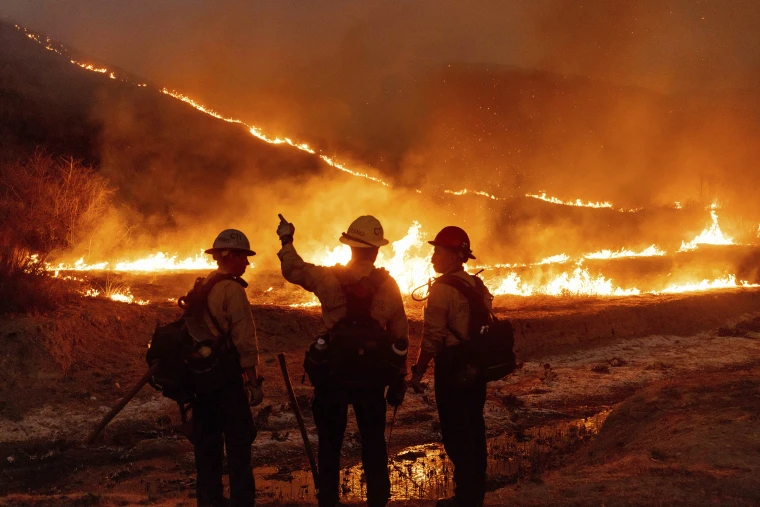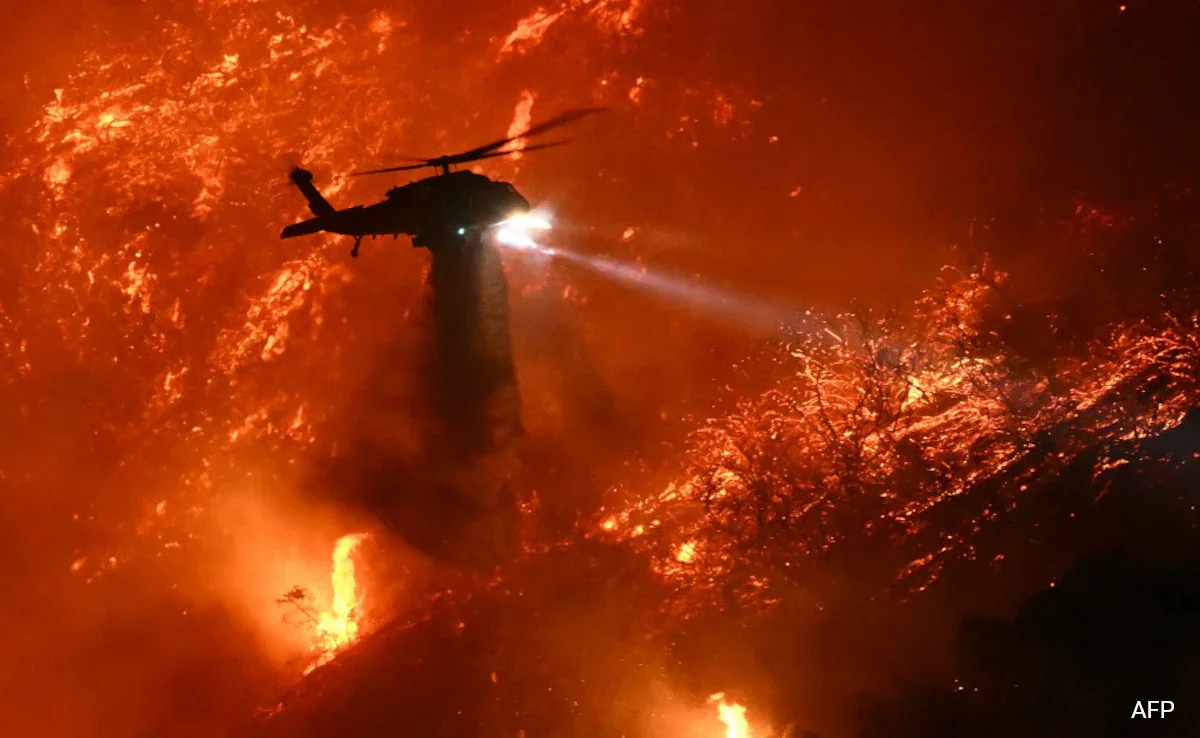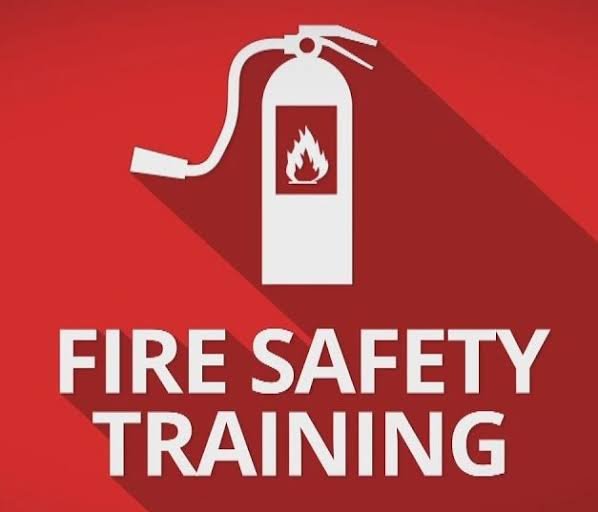Los Angeles, one of California’s most iconic cities, is currently facing one of the most severe wildfire disasters in its history. Over the past seven days, the fire has devastated communities, displaced hundreds of thousands of people, and caused massive economic and environmental damage. This blog delves into the causes, impact, and ongoing efforts to control the wildfire.
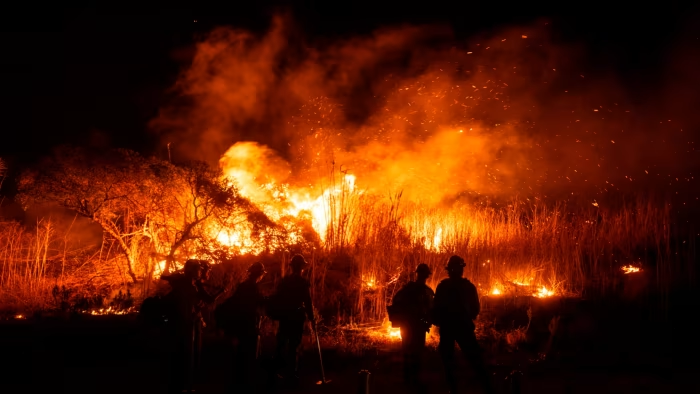
The Incident: How It Started
The wildfire reportedly began with an electric shock from a tower owned by Southern California Edison (SCE), a major electricity supplier in the region. The tower initially caught fire, which quickly spread due to the strong winds blowing at speeds of 100 km/h. Although the investigation is still ongoing, early reports suggest that poor maintenance of the tower may have contributed to the incident. Many citizens have criticized SCE for negligence, blaming the company for failing to repair the infrastructure.
Another significant factor that exacerbated the situation is the city’s weather pattern. Los Angeles experienced heavy rainfall in recent months, which led to the growth of lush vegetation. However, the lack of rain over the past few weeks caused this vegetation to dry up, turning it into a perfect fuel source for the wildfire. This combination of dry vegetation and strong winds created the ideal conditions for the fire to grow rapidly.
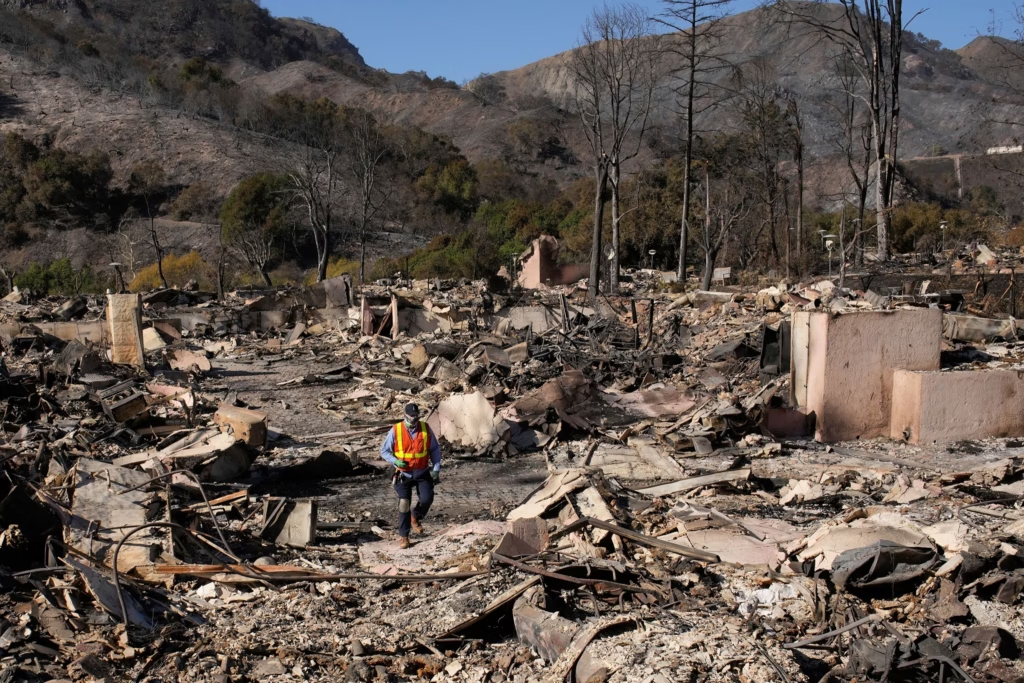
Impact of the Wildfire
The wildfire has had a devastating impact on Los Angeles and its surrounding areas.
Economic Losses
The estimated economic damage from the wildfire has reached a staggering $150 billion. This includes the destruction of homes, businesses, and infrastructure, as well as the costs associated with firefighting and disaster management efforts.
Destruction of Properties
Approximately 15,000 homes, including those of many celebrities, have been destroyed. Thousands of buildings have also been reduced to rubble. Entire neighborhoods now stand in ruins, and many residents have lost everything.
Massive Evacuations
Fearing for their lives, around 250,000–300,000 people have evacuated their homes. They have been relocated to safer cities and temporary shelters. This mass displacement has caused significant logistical challenges for local authorities.
Environmental Damage
The wildfire has consumed large areas of dry vegetation, and the continuous burning has released massive amounts of carbon dioxide and pollutants into the atmosphere. The environmental toll will likely have long-term consequences for the region.
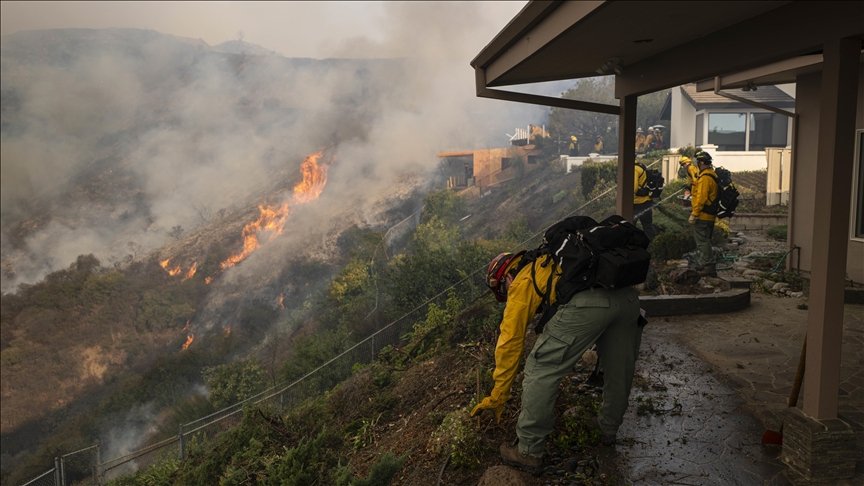
Global Response: Fighting the Fire
Despite the best efforts of approximately 15,000 firefighters, the wildfire continues to rage due to adverse weather conditions. Firefighting teams from four countries—South Africa, Mexico, Canada, and the United States—are working together, utilizing the latest technology to combat the blaze.
Aerial Firefighting
Eighty aircraft, including water bombers and helicopters, are dropping water and fire retardants from above. However, the strong winds have made it challenging to control the spread of the fire.
Ground Operations
Firefighters are using advanced equipment to create firebreaks and contain the flames. However, the dry conditions and intense heat are making it difficult to make significant progress.
Electricity Shutdown
In an effort to prevent further fire outbreaks, electricity has been shut down in parts of Los Angeles. This proactive measure aims to reduce the risk of additional sparks or electric shocks.
Weather Challenges
Strong winds, coupled with dry trees and vegetation, continue to fuel the fire. Forecasts suggest that these winds will persist for another week, potentially causing the fire to spread further. The dry weather and high-speed winds are making it nearly impossible to bring the fire under full control.
Current Status
Initially, the wildfire broke out in seven locations across Los Angeles. Firefighters have managed to control the flames in five areas, but two hotspots remain active. However, the situation is still critical, with the fire threatening more properties and lives.
Key Statistics
• Homes Destroyed: 15,000, including celebrity residences.
• Evacuations: 250,000–300,000 people relocated.
• Firefighters Deployed: 15,000, including international teams.
• Aerial Units: 80 planes and helicopters in operation.
• Economic Loss: $150 billion.
• Fire Duration: 7 days (and ongoing).
Conclusion
The Los Angeles wildfire is a stark reminder of the growing risks associated with climate change and infrastructure neglect. The combination of strong winds, dry vegetation, and potential negligence in maintaining electricity towers has culminated in a disaster of unprecedented scale.
As firefighting efforts continue, the priority remains to save lives and prevent further damage. The coming days are critical, as weather conditions will play a decisive role in determining whether the fire can be brought under control.
